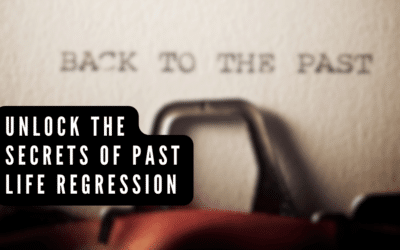There are two approaches with hypnosis:
- The authoritarian approach is direct and commanding, often relying on clear instructions and firm suggestions.
- The permissive approach is subtle and collaborative, using softer language and guiding the client to find their own solutions.
Both methods have their strengths, but their effectiveness often depends on the practitioner’s skill and the client’s personality. By exploring the differences, you’ll learn how to choose the method that suits you.
What Is Authoritarian Hypnosis?
Authoritarian hypnosis is a direct and commanding approach that relies on the hypnotherapist’s authority and assertiveness to guide the client into a trance state. This method is often structured, clear, and focused, making it a preferred choice in scenarios where quick results are required.
Characteristics of Authoritarian Hypnosis
- Direct Suggestions: The therapist uses straightforward commands, such as “Relax your body now” or “Focus only on my voice.”
- Structured Sessions: Sessions typically follow a predefined sequence, leaving little room for deviation.
- Strong Leadership Role: The hypnotherapist assumes full control of the process, directing the client’s focus and responses.
- Firm Language: The tone is confident and authoritative, designed to instill trust and compliance.
Techniques Used in Authoritarian Hypnosis
- Progressive Relaxation: Clients are guided step-by-step into a deeper state of relaxation through firm instructions.
- Post-Hypnotic Suggestions: Commands are given during trance to influence behavior or thought patterns after the session.
- Direct Problem-Solving: Specific solutions are suggested to address the client’s issues, such as “You will feel confident when speaking in public.”
When Is Authoritarian Hypnosis Effective?
This approach is particularly effective in situations where:
- The client prefers clear direction and guidance.
- Time is limited, and quick results are necessary.
- The issue being addressed is straightforward, such as smoking cessation or phobia reduction.
- The client feels comfortable relinquishing control to the hypnotherapist.
Potential Limitations of Authoritarian Hypnosis
While this method can be powerful, it is not suitable for every client or situation.
Some individuals may resist authority or feel uncomfortable with the therapist’s dominant role. Additionally, authoritarian hypnosis may lack the flexibility needed for more complex or deeply rooted issues.
What is Permissive Hypnosis?
Permissive hypnosis is a gentle and collaborative approach that prioritizes the client’s active involvement in the process. It uses subtle suggestions, metaphors, and storytelling to guide the client toward their desired outcomes.
This creates a supportive environment where clients feel empowered and in control of their journey.
Characteristics of Permissive Hypnosis
- Indirect Suggestions: The therapist offers open-ended prompts, such as “You might find yourself feeling more relaxed now” or “Perhaps you’ll notice your breathing slowing naturally.”
- Flexible Sessions: Sessions are adaptive, allowing the therapist to adjust based on the client’s responses and needs.
- Client-Centered Focus: The process emphasizes the client’s active role, encouraging them to discover solutions within themselves.
- Soothing Language: The tone is calm, nurturing, and non-confrontational, fostering trust and relaxation.
Techniques Used in Permissive Hypnosis
- Metaphors and Storytelling: The therapist shares relatable stories or metaphors to encourage subconscious learning and problem-solving.
- Pacing and Leading: By first matching the client’s current state (pacing), the therapist gradually guides them toward a more resourceful state (leading).
- Guided Imagery: The client is invited to visualize calming or empowering scenarios, enabling them to access inner resources and insights.
When Is Permissive Hypnosis Effective?
This approach is particularly beneficial in scenarios where:
- The client values a sense of collaboration and autonomy.
- Deep-seated emotional issues, such as trauma or anxiety, require a more nuanced and sensitive approach.
- The client resists authority or is skeptical of hypnosis.
- Long-term transformation is the goal, as this approach often facilitates profound and lasting change.
Potential Limitations of Permissive Hypnosis
While permissive hypnosis is versatile and widely applicable, it may not always produce rapid results, especially in situations where immediate behavioral changes are required. Some clients may also find the indirect style less effective if they prefer clear guidance and structure.
Permissive hypnosis is a powerful technique that aligns with the principles of empowerment and self-discovery. By creating a safe and collaborative environment, it allows clients to explore their subconscious mind at their own pace, fostering meaningful and sustainable transformation.
Authoritarian vs. Permissive Hypnosis: The Differences
Each approach has its unique strengths, and knowing when to apply them can significantly impact the success of a hypnotherapy session.
| Aspect | Authoritarian Hypnosis | Permissive Hypnosis |
| Tone | Direct, commanding, and authoritative | Gentle, collaborative, and nurturing |
| Suggestions | Clear and explicit instructions | Indirect and open-ended suggestions |
| Client Role | Passive, following the therapist’s guidance entirely | Active, discovering solutions with therapist’s help |
| Structure | Highly structured and predefined | Flexible, adapting to the client’s responses |
| Therapist Role | Leader with full control | Guide or facilitator |
Strengths of Each Approach
Here are the strengths of each approach:
Authoritarian Hypnosis
- Efficiency: Delivers fast results in straightforward cases like habit cessation (e.g., smoking).
- Clarity: Provides clear directions, which can be reassuring for clients who thrive on structure.
- Authority: Ideal for situations where the therapist’s confidence is critical to the client’s trust.
Permissive Hypnosis
- Adaptability: Suits clients with unique needs or those requiring emotional sensitivity.
- Empowerment: Encourages self-discovery and long-lasting transformation.
- Subtlety: Effective for addressing deeply rooted issues, such as trauma or self-esteem challenges.
Factors to Consider When Choosing an Approach
The effectiveness of each approach depends on various factors:
- Client Personality: Authoritarian hypnosis may work well for those who prefer strong guidance, while permissive hypnosis is better suited for clients valuing autonomy.
- Nature of the Issue: Quick fixes for habits or phobias often benefit from authoritarian methods, while complex emotional issues may require the permissive style.
- Therapist Expertise: The practitioner’s comfort and skill with each approach play a significant role in its success.
Integrating Both Approaches: A Flexible Framework
While authoritarian and permissive hypnosis are often viewed as distinct methods, many modern hypnotherapists find that integrating elements of both approaches leads to more effective and personalized sessions.
This blended style allows practitioners to adapt to individual client needs, maximizing the benefits of each technique.
Benefits of Combining Approaches
Integrating authoritarian and permissive hypnosis offers several advantages:
- Enhanced Versatility: Allows the therapist to switch styles based on the client’s responses or preferences.
- Deeper Connection: Builds rapport with permissive techniques while instilling confidence with authoritarian suggestions.
- Broader Application: Addresses both emotional complexities and behavior-focused goals in the same session.
How to Blend Authoritarian and Permissive Techniques
Here’s how to blend both of these techniques:
1. Begin with a Permissive Approach
- Use soft language and guided imagery to create a relaxed and trusting environment.
- Example: “You might notice your breathing slowing as you settle into this moment.”
2. Transition to Authoritarian Suggestions
- Introduce direct suggestions once the client is in a receptive state.
- Example: “You will feel confident and focused in every situation.”
3. Return to Permissive Techniques
- Conclude with open-ended prompts or metaphors to reinforce subconscious processing.
- Example: “Like planting a seed, you’ll notice these positive changes growing stronger each day.”
Tailoring Sessions to Client Needs
Combining approaches requires sensitivity to the client’s personality, goals, and comfort level:
- For Analytical Clients: Use permissive techniques to help them feel in control, then introduce authoritarian suggestions for specific actions.
- For Action-Oriented Clients: Start with authoritarian suggestions to build momentum, followed by permissive methods to reinforce emotional growth.
Ethical Considerations in Hypnosis Practice
When applying authoritarian or permissive hypnosis techniques, ethical considerations are paramount.
The power of hypnosis lies in its ability to influence the subconscious mind, and with that power comes the responsibility to prioritize the client’s well-being and autonomy.
The Importance of Informed Consent
Before beginning any hypnosis session, practitioners must ensure that clients understand:
- The Nature of Hypnosis: Explain what hypnosis is, how it works, and what to expect during the session.
- The Goals of the Session: Clearly define the intended outcomes and how the techniques will help achieve them.
- The Client’s Role: Emphasize that hypnosis is a collaborative process and that the client retains control at all times.
Obtaining informed consent fosters trust and ensures that clients feel safe and respected.
Avoiding Manipulation
While hypnosis is a powerful tool for positive change, it can be misused if applied irresponsibly. Practitioners must avoid:
- Using Hypnosis for Personal Gain: Never use hypnotic techniques to manipulate clients for financial or personal benefit.
- Imposing Personal Beliefs: Respect the client’s values and avoid suggesting ideas that conflict with their beliefs.
- Overstepping Boundaries: Stick to the agreed-upon goals of the session and avoid exploring areas the client has not consented to address.
Ethical Practices for Authoritarian Hypnosis
- Respect for Authority: Ensure that the client consents to a directive approach and feels comfortable with the therapist taking the lead.
- Clarity in Communication: Use precise language to avoid misunderstandings and ensure the client feels supported rather than controlled.
Ethical Practices for Permissive Hypnosis
- Client-Centered Focus: Empower the client by emphasizing their autonomy and ability to find solutions within themselves.
- Open-Ended Suggestions: Avoid imposing specific outcomes; instead, guide the client toward their own discoveries.
- Sensitive Language: Use non-judgmental and inclusive language to foster a safe and collaborative environment.
Conclusion: Empowering Change Through Hypnosis
Hypnosis is not just a method, it’s a journey of transformation.
Whether through directive commands or collaborative exploration, it provides tools to unlock the potential within. By understanding and applying these approaches thoughtfully, hypnosis can be a catalyst for profound growth, empowerment, and success.
The possibilities are endless – start your journey today and discover the life-changing power of hypnosis.
FAQ
What is the difference between authoritarian and permissive hypnosis?
Authoritarian hypnosis is a direct and commanding approach where the therapist provides clear instructions and takes control of the process. Permissive hypnosis, on the other hand, is gentle and collaborative, allowing clients to actively participate in finding solutions through subtle suggestions and guidance.
When is authoritarian hypnosis most effective?
Authoritarian hypnosis works best in situations requiring quick results or when dealing with straightforward issues like smoking cessation or phobias. It’s ideal for clients who prefer clear direction and feel comfortable relinquishing control to the therapist.
Who benefits most from permissive hypnosis?
Clients who value collaboration, autonomy, and a subtle approach are well-suited for permissive hypnosis. It is particularly effective for addressing deep emotional issues, such as trauma or anxiety, and for those who are skeptical or resistant to authority.
Can both approaches be combined in a single session?
Yes, many hypnotherapists blend authoritarian and permissive techniques to tailor sessions to individual client needs. For example, a session may start with a permissive approach to build rapport and transition to authoritarian suggestions for clarity and action.
How do I choose the best hypnosis approach for me?
Your choice depends on your personality, preferences, and goals. If you prefer strong guidance and quick results, authoritarian hypnosis may suit you. If you value collaboration and deeper emotional exploration, permissive hypnosis might be a better fit. Discuss your needs with your hypnotherapist to determine the most effective approach.


